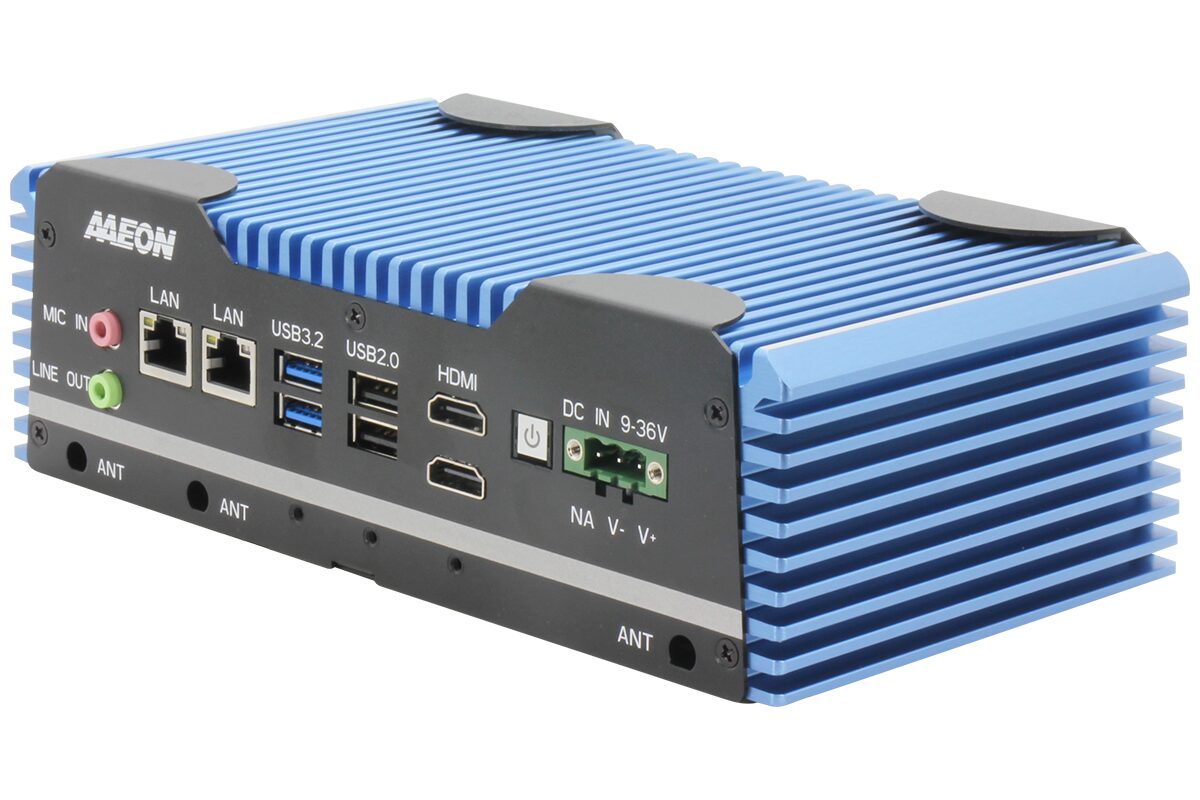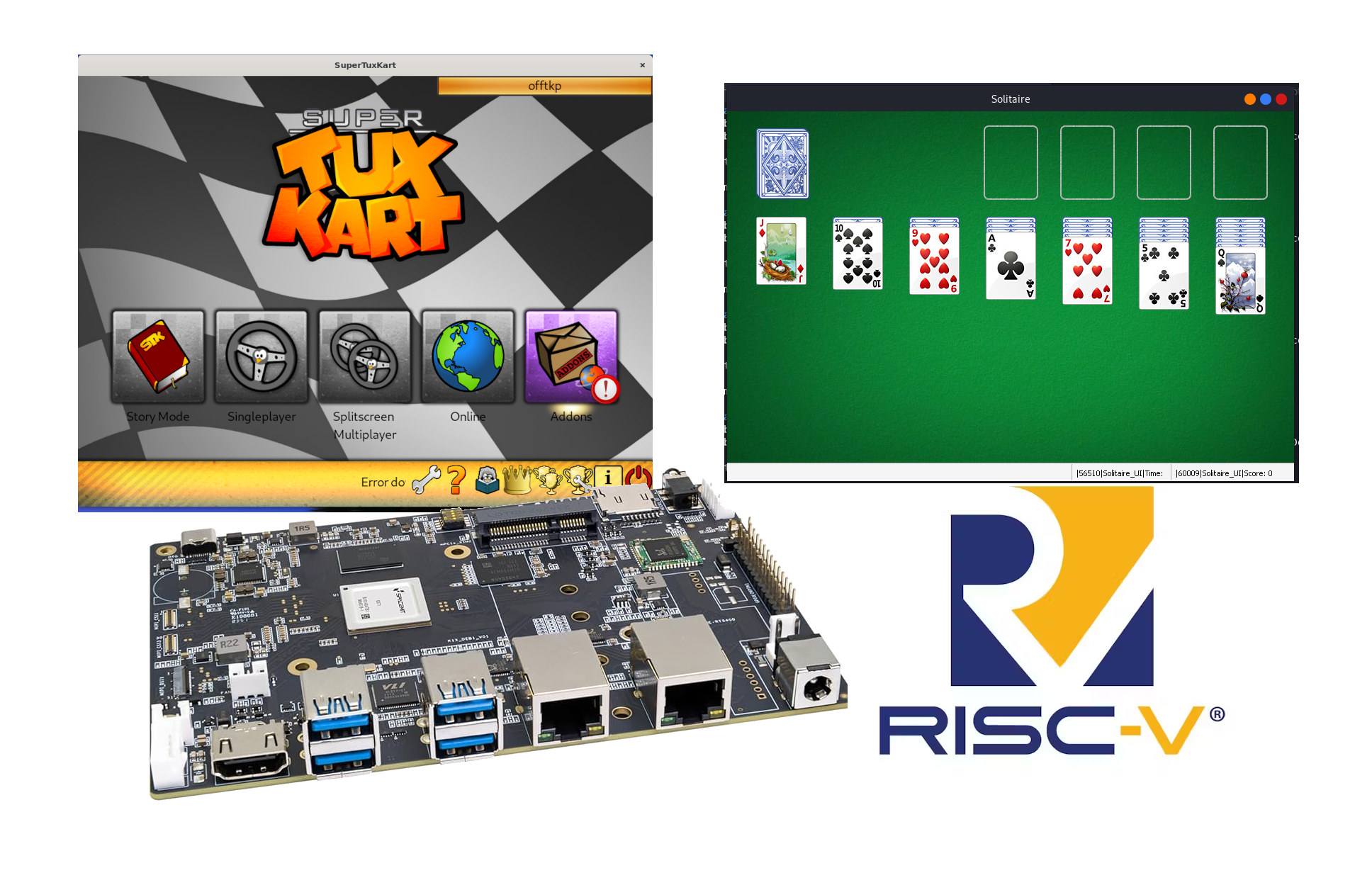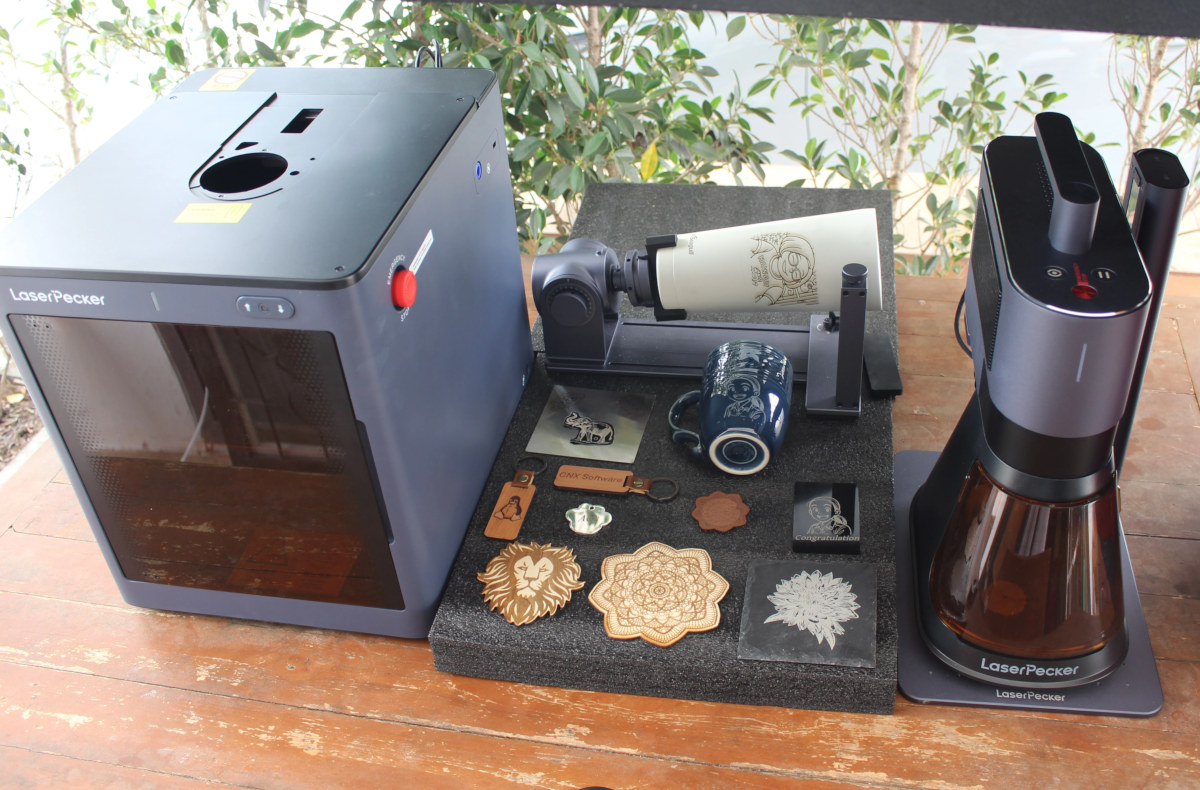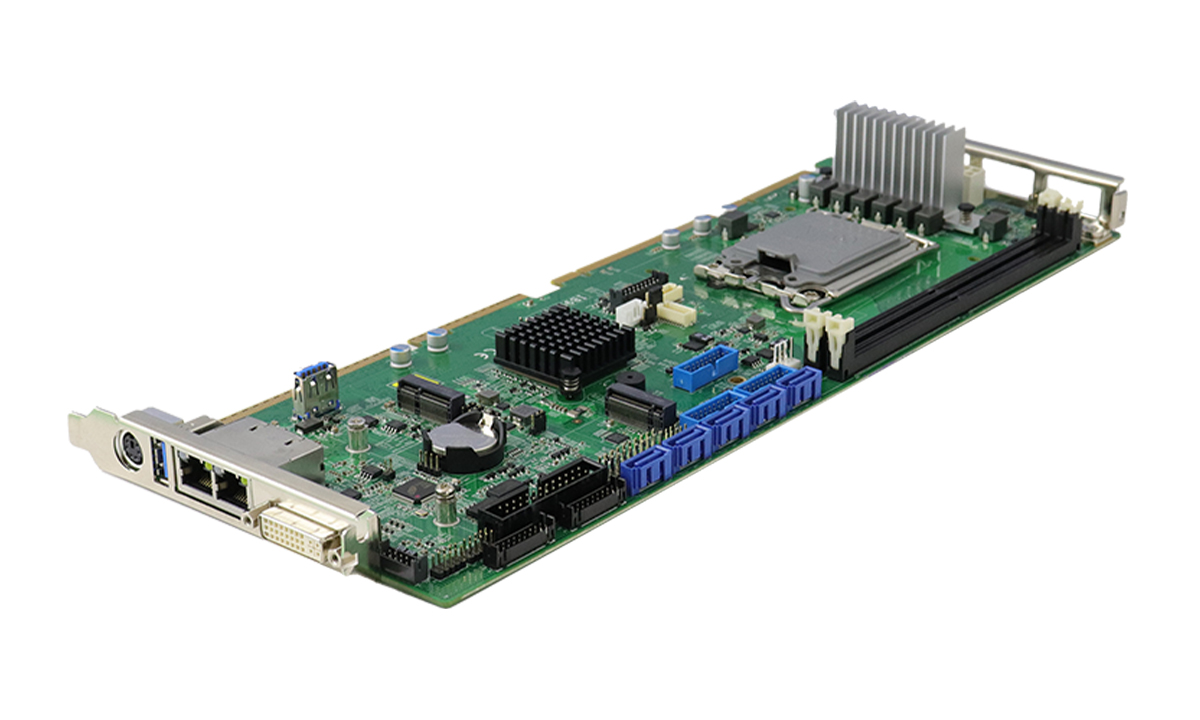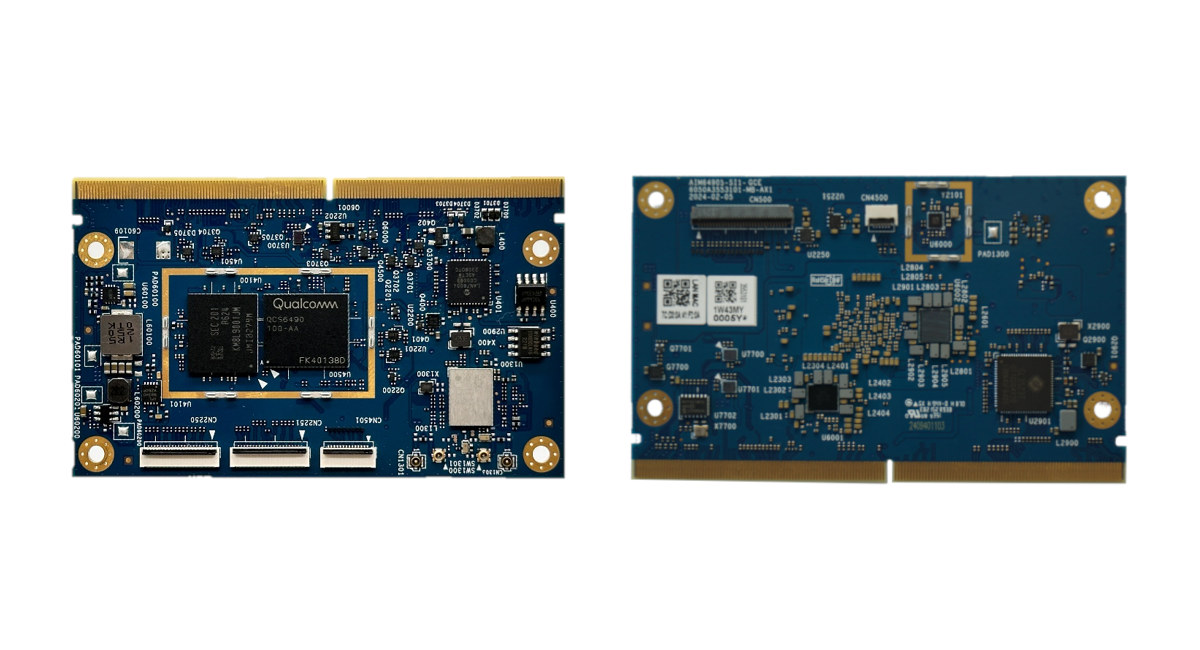The Protectli Vault Pro VP2430 is a compact, Intel Processor N150-based fanless network appliance designed for firewall, router, and virtualization applications in home labs, small businesses, and edge deployments. The system supports up to 64GB DDR5-4800 memory via a single SO-DIMM slot and features various storage options, including a 32GB onboard eMMC flash, an M.2 2280 NVMe SSD slot, and a SATA 3.0 interface for 2.5″ SSDs. It comes with four 2.5GbE Intel I226-V Ethernet ports and includes video outputs via HDMI 2.0, DisplayPort 1.2, and two USB-C with DisplayPort functionality. It also features M.2 slots for WiFi and 4G/5G modem, to work with the module, there is also a Nano SIM slot. Additionally, it has multiple internal headers, including GPIO, COM, SATA, and eSPI for expansion. On top of that, the system supports both AMI and coreboot BIOS options, and TPM 2.0 for security, making it ideal for secure […]
Intel Atom x7000RE fanless industrial box PC offers 10-year life cycle for factory automation
AAEON BOXER-6617-ASL is a rugged and compact fanless industrial box PC built around the Intel Atom x7000RE series of SoCs. It is designed for harsh industrial environments and has a wide operating temperature range (-20°C to 70°C) and a guaranteed 10-year product lifecycle making it a reliable long-term solution for factory automation and other embedded applications. The rugged embedded system supports up to 32GB DDR5 memory, dual HDMI, dual 2.5GbE LAN ports, and extensive I/O including six serial ports, USB 3.2 and 2.0, DIO, and audio. Storage options include M.2 NVMe and 2.5″ SATA, with additional expansion through M.2 E-Key (Wi-Fi) and B-Key (5G/LTE) sockets. It also has a wide 9V–36V power input range, circuit protection, and strong shock/vibration resistance. The computer also features six RS-232/422/485 serial ports and DIO via DB9 connectors AAEON BOXER-6617-ASL Specifications: Amston Lake Series SoC options (one or the other) Intel Atom x7835RE octa-core processor […]
Felix86 is an x86-64 emulator for RISC-V hardware
Some programs and most games are designed for x86 hardware, and we’ve already seen projects like box86 x86 emulator for 32-bit Arm targets and Box64 x86-64 emulator for 64-bit Arm hardware to run games on Arm hardware. The Felix86 x86-64 emulator is similar to Box64, except it targets specifically RISC-V hardware. The project is very new, but it can already run some Linux games like World of Goo 2, SuperTuxKart, and Quake OpenArena, while the Wine emulator can currently handle simple Windows games like Solitaire. You’ll find the full compatibility list on the project’s website. Felix86 features: Just-in-Time (JIT) recompiler Uses the RISC-V Vector Extension for SSE instructions Utilizes the B extension, if available, for bit manipulation instructions like bsr Supports a variety of optional extensions, such as XThead custom extensions You’ll find the source code on GitHub. Testing has mostly been done on a Banana Pi BPI-F3 SBC powered […]
LaserPecker LP5 Review – Part 2: A 20W diode & fiber laser engraver tested with LDS software, rotary extension, safety enclosure
We have already checked the specifications, done an unboxing, and shown how to assemble the LaserPecker LP5 2-in-1 fiber & diode laser engraver along with its safety enclosure and rotary extension in the first part of the review. In the second part of the review, we will report our experience using the LaserPecker LP5 laser engraver with various materials such as plywood, stainless steel, rubber, and aluminum, as well as a ceramic cup and an insulated tumbler using either the LDS software on Windows or the LDS mobile apps on an iPad. Using the LaserPecker LP5 laser engraver with LDS software LaserPecker Design Space (LDS) is a laser engraving and cutting software designed specifically for the LaserPecker laser engravers. It’s meant to allow users to easily create projects with personalized engraving, complex patterns, and precise cutting of various materials. It can run on Windows and macOS with Intel or Apple […]
Geniatech AIM M2 M.2 module features Kinara Ara-2 40 TOPS AI accelerator
There are plenty of M.2 AI modules based on accelerators such as Hailo-8, MemryX MX3, or Axelera AI, but the Geniatech AIM M2 module is based on the Kinara Ara-2 40 TOPS AI accelerator that we’ve yet to cover here on CNX Software. The Key-M module is designed to handle Generative AI and transformer-based models such as Stable Diffusion at a lower price point than competitors, and operates at a typical sub-2W power consumption in computer vision workloads. Target applications include AI assistants/Copilot, gaming, smart retail, physical security, and factory automation. Geniatech AIM M2 specifications: AI Accelerator Kinara Ara-2 NPU with 40 TOPS of AI power Package – 17x17mm FCBBA System Memory – 16GB RAM (4GB/8GB Option) Host interface – PCIe Gen4 x4 Security – Secure boot and encrypted memory access Misc – Heatsink cooling Supply Voltage – 3.3V Power Consumption – Under 2 Watts (typical) TDP – 12 Watts […]
Home Assistant 2025.3 released with dashboard view headers, tile card improvements, better SmartThings integration
The popular Home Assistant has gotten an update with version 2025.3 that brings dashboard view headers, several tile card improvements, better map clustering, streamed responses from LLMs, and improved SmartThings integrations. Let’s have a look at some of the improvements starting with dashboard view headers which allow users to add a title and welcoming text to dashboards using Markdown and templates. You can also add badges next to the headers. Home Assistant 2025.3 also brings plenty of improvements to tile cards: Adding a circular background around tiles that perform actions, and leaving the ones that just show extra information without a circle Features of a tile card can now be positioned inline in the tile card (e.g. on/off button) New features: switch toggle, counter toggle (to increase, decrease, or reset a counter entity), animations when hovering over atile card Editor improvements for ease of use The new version of Home […]
iBASE IB996 full-size PICMG 1.3 CPU card features Intel Q670E chipset, supports 12th to 14th Gen Intel Core desktop processors
The iBASE IB996 full-size PICMG 1.3 CPU card, built on the Intel Q670E chipset, supports 12th to 14th Gen Intel Core desktop processors. It is designed for industrial and embedded applications with dual 2.5GbE LAN, DDR5 support, and extensive I/O options including PCI and PCIe x16 interfaces. We haven’t covered this type of card on CNX Software before, so some basic explanations are needed. PICMG 1.3, or SHB Express, is an industrial standard for System Host Boards (SHBs) supporting PCIe, PCI, and PCI-X interfaces first ratified in 2005 (PCIMG 1.0). It uses a backplane to separate the processing unit from I/O, enabling modular design and easy integration. Commonly used in industrial automation, medical systems, and embedded computing, it ensures compatibility and scalability for high-performance applications. iBASE IB996 CPU card specifications: Supported SoC – 14th, 13th, and 12th Gen Intel Core i9/i7/i5/i3 desktop processors (LGA1700 socket) based on the Raptor Lake-S […]
SagireEdge AI 600 SMARC SoM and devkit feature Qualcomm QCS6490 AIoT processor for Edge AI applications
Sagire AI’s SagireEdge AI 600 is a SMARC-compliant system-on-module (SoM) and a development kit based on Qualcomm QCS6490 octa-core Cortex-A78/A55 IoT processor and designed for Edge AI applications. The module comes with 8GB LPDDR5 and 128GB UFS storage, a WiFi 6E and Bluetooth 5.5 wireless module, a CAN Bus controller, and on-module camera and audio input connectors. Its MXM 3.0 edge connector exposes additional camera interfaces, a MIPI DSI display interface, PCIe Gen3 x2, gigabit Ethernet, a few USB interfaces, and a range of low-speed I/Os. SagireEdge AI 600 SoM specifications: SoC – Qualcomm QCS6490 CPU – Octa-core Kryo 670 with 1x Gold Plus core (Cortex-A78) @ 2.7 GHz, 3x Gold cores (Cortex-A78) @ 2.4 GHz, 4x Silver cores (Cortex-A55) @ up to 1.9 GHz GPU – Adreno 643L GPU @ 812 MHz with support for Open GL ES 3.2, Open CL 2.0, Vulkan 1.x, DX FL 12 DSP – […]



